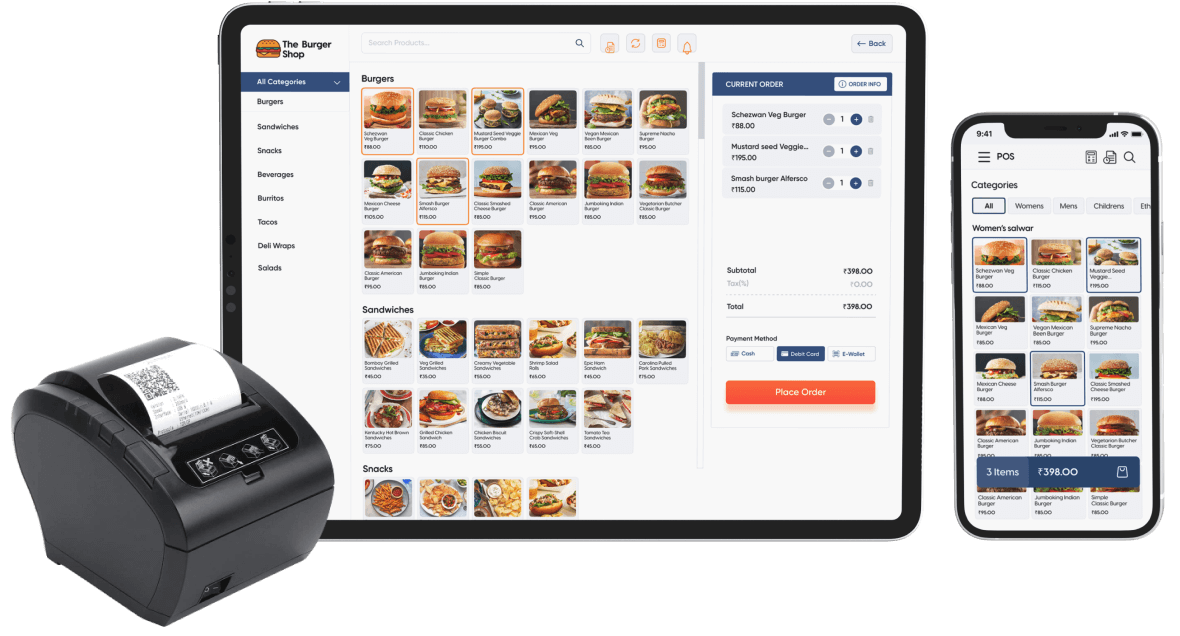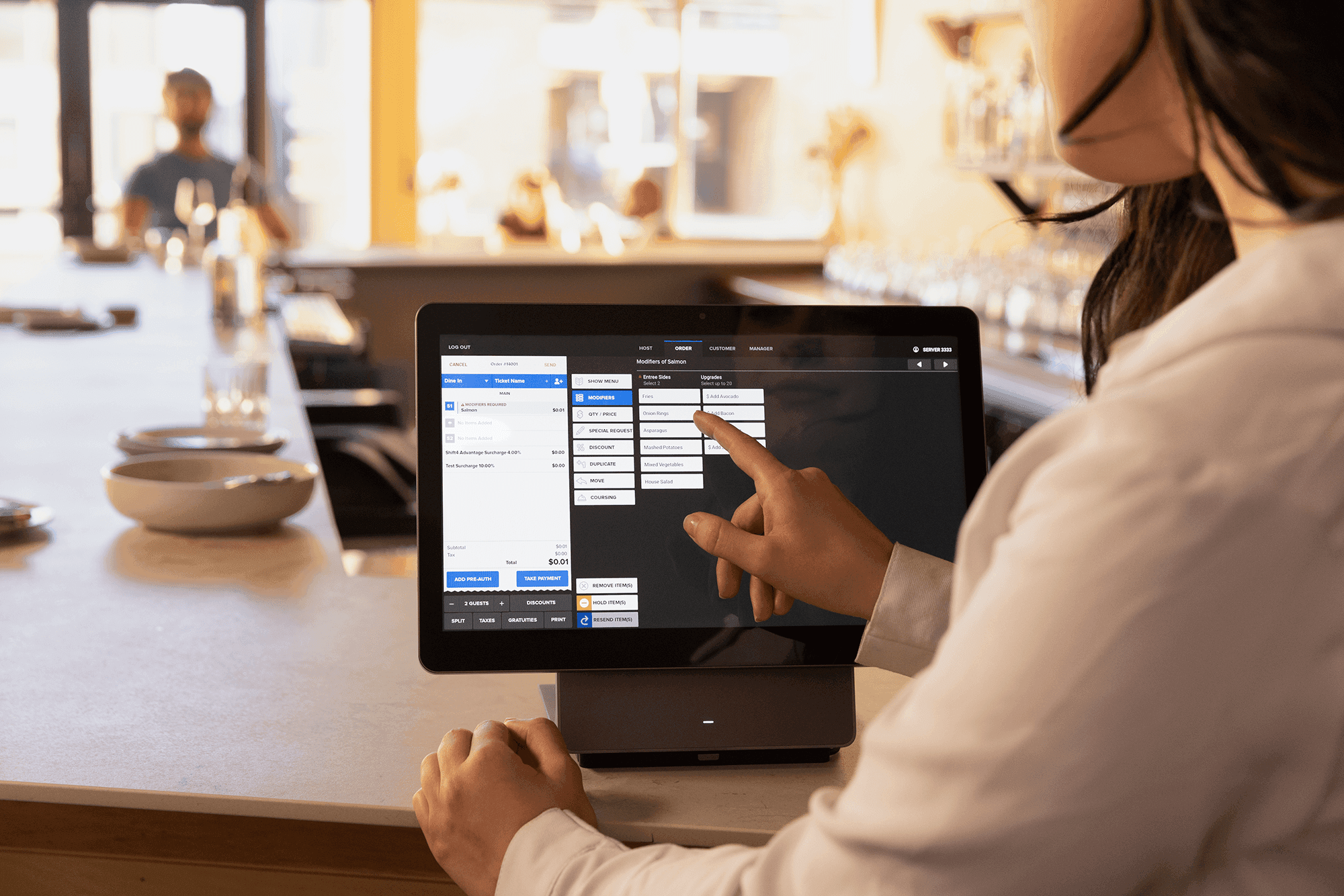Automate ingredient usage with Restaurant POS Software
How POS System Functions: A Comprehensive Overview for Organization Owners
A POS system acts as a crucial device for modern-day organizations, incorporating different components to streamline procedures. It includes hardware like barcode scanners and software up for sale tracking. This system not only refines purchases however also takes care of stock and evaluates customer actions. Comprehending its functionality can significantly impact an organization's effectiveness and decision-making. What are the essential components that add to this effectiveness? Checking out these elements supplies useful insights.
Understanding the Elements of a POS System
A Point of Sale (POS) system is made up of several crucial components that collaborate to assist in transactions and manage service operations. At its core, the equipment consists of gadgets such as a cash money register, barcode scanner, receipt printer, and repayment incurable, all necessary for processing sales (Restaurant POS Software). The software program component manages supply, sales tracking, and client data, giving important insights for service decisions.Additionally, databases keep purchase records and client details, making certain data honesty and security. Network connectivity enables real-time updates and access to cloud-based solutions, boosting operational effectiveness. Interface, designed for simplicity of usage, permit team to navigate the system quickly, reducing training time. Together, these components develop a natural system that enhances the sales procedure, enhances customer support, and aids in effective management of organization sources. Understanding these elements is essential for local business owner looking for to maximize their POS systems
How Sales Deals Are Processed
When a customer chooses to make a purchase, the sales purchase initiates a series of organized steps within the POS system. First, the cashier inputs the things being purchased, which are checked with a barcode viewers or manually gotten in. This activity recovers item information, consisting of rates and relevant taxes, from the system's database.Next, the consumer exists with the total quantity due. The POS system after that refines the payment, whether via money, bank card, or mobile settlement methods. For digital repayments, the POS firmly connects with settlement cpus to license and validate the transaction.Once the repayment is validated, the system creates a receipt, which can be published or sent out electronically. This invoice functions as receipt for the consumer. Ultimately, the deal information is taped in the system, guaranteeing precise sales documents and monetary tracking for the organization.
Inventory Administration and Tracking
Reliable stock monitoring and monitoring are essential elements of a POS system, as they ensure that services preserve suitable supply levels and reduce discrepancies. A robust POS system permits real-time supply updates, mirroring sales and returns instantly. This allows service proprietors to you can find out more monitor stock degrees properly, making sure that prominent products are readily offered while preventing overstocking of much less prominent products.Additionally, advanced POS systems offer features such as automated supply signals and reorder suggestions, improving the procurement process. Barcoding and RFID innovation improve accuracy in tracking supply motion, lowering human error. Extensive reporting devices offer understandings right into stock turn over rates, aiding companies make informed decisions concerning acquiring and item offerings. Inevitably, reliable supply monitoring with a POS system not only enhances functional performance yet also boosts client complete satisfaction by guaranteeing item accessibility.

Analyzing Client Data and Insights
Consumer data evaluation offers as a powerful tool for organizations utilizing a POS system. By accumulating and examining purchase information, businesses can reveal valuable understandings regarding customer behavior and preferences. This analysis allows them to identify purchasing patterns, peak buying times, and popular items, thus educating stock decisions and advertising and marketing strategies.Additionally, companies can segment their consumer base, enabling individualized advertising initiatives that accommodate certain demographics or acquiring behaviors. Comprehending customer loyalty patterns also assists in Look At This establishing targeted promos and incentives programs.The information obtained from a POS system can additionally reveal understandings into client responses, enabling services to make enlightened choices concerning item offerings and service enhancements. Ultimately, leveraging customer information effectively can improve the overall shopping experience, foster consumer complete satisfaction, and drive profits growth.
Advantages of Executing a POS System
Carrying out a POS system uses many advantages that can significantly enhance company operations. To start with, it streamlines deal procedures, minimizing wait times and boosting customer fulfillment. By automating sales procedures, services can decrease human mistake and guarantee accurate record-keeping. Furthermore, a POS system supplies useful data analytics, allowing owners to track sales trends and stock degrees in real-time. This understanding sustains notified decision-making, aiding to optimize stock management and marketing strategies.Moreover, lots of POS systems incorporate with other service devices, such as accounting software program, streamlining monetary management. Improved worker monitoring functions, such as tracking hours and performance, additional add to functional efficiency.Lastly, the implementation of a POS system can result in raised profits with enhanced consumer experiences and calculated insights, inevitably promoting organization growth and sustainability.
Frequently Asked Questions
What Sorts Of Services Can Gain From a POS System?

Exactly how Much Does a POS System Normally Price?
The cost of a POS system normally varies from a few hundred to a number of thousand bucks, relying on features, hardware, and software - Restaurant POS Software. Services have to consider ongoing charges for maintenance, assistance, and deal handling when budgeting

Can I Integrate a POS System With Existing Software?
Incorporating a POS system with existing software is frequently feasible. Several systems supply read this APIs or built-in compatibility features, permitting companies to streamline procedures and improve functionality by attaching different software applications successfully.
What Training Is Required for Team to Use a POS System?
Training for staff to use a POS system typically includes understanding software performances, refining deals, managing stock, and handling client interactions - Restaurant POS Software. Practical presentations and hands-on session improve proficiency and confidence in utilizing the system successfully
What Happens if the Net Goes Down While Utilizing a POS System?
If the net goes down during POS system use, transactions may be disrupted. Many systems provide offline capacities, permitting fundamental procedures to proceed, but full performance, consisting of real-time inventory updates, will be restricted.